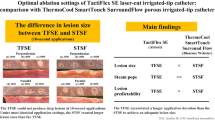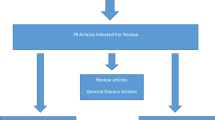Abstract
The Angio-Seal™ hemostatic puncture closure device is the culmination of development efforts dating from 1986. Devel-opment was driven to solve problems of delivering a multi-piece bioabsorbable puncture closure assembly through an introducer, the precise placement of the device in the vessel, the mastery of molding tiny absorbable polymer components, the manufacture of collagen hemostatic sponges having strong tear strength, and the testing of very large samples to establish safety and efficacy. Improvements included in the new 6F device to improve deployment reliability are also discussed.
Zusammenfassung
Das Angio-Seal™-Verschlußsystem (Hemostatic Puncture Closure Device, HPCD) ist das Ergebnis einer langjährigen Entwicklung, die 1986 begonnen hat. Ziel war die Herstellung eines bioresorbierbaren arteriellen Verschlußsystems, welches über ein spezielles Applikationsgerät exakt im Gefäß plaziert werden kann. Hierzu mußte ein dünner absorbierbarer Polymeranker hergestellt werden, dem ein Kollagenschwamm, der unter Druck fixiert wird, gegenübersteht. Um Sicherheit und Wirksamkeit zu testen, wurden zahlreiche Tieruntersuchungen durchgeführt. Kürzlich wurde auch ein 6F-Applikator mit durch weitere Verbesserungen erhöhter Zuverlässigkeit eingeführt.
Similar content being viewed by others
References
Audell L, Bowald S, Busch C, et al. Polyglactin mesh grafting of the pig aorta. Acta Chir Scand 1980;146:97–9.
Bowald S, Busch C, Eriksson I. Absorbable material in vascular prostheses: a new device. Acta Chir Scand 1980;146:391–5.
Galletti PM, Aebischer P, Sasken HF, et al. Experience with fully bioresorbable aortic grafts in the dog. Surgery 1988;103:231–41.
Greisler HP, Endean ED, Klosak JJ, et al. Polyglactin 910/polydioxanone biocomponent totally resorbable vascular prostheses. J Vasc Surg 1988;7:697–705.
Greisler HP, Cabusao EB, Lam TM, et al. Kinetics of collagen deposition within bioresorbable and nonresorbable vascular prostheses. ASAIO Transactions 1991;37:M472–5.
Greisler HP, Kim DU, Price JB, et al. Arterial regenerative activity after prosthetic implantation. Arch Surg 1985;120:315–23.
Kensey KR, Evans DG, McGill LD, et al. In vivo testing of a bioresorbable hemostatic puncture closure device. J Am Coll Cardiol 1991;17:263A.
Author information
Authors and Affiliations
Corresponding author
Rights and permissions
About this article
Cite this article
Nash, J.E., Evans, D.G. The Angio-Seal™ hemostatic puncture closure device. Herz 24, 597–606 (1999). https://doi.org/10.1007/BF03044483
Issue Date:
DOI: https://doi.org/10.1007/BF03044483




